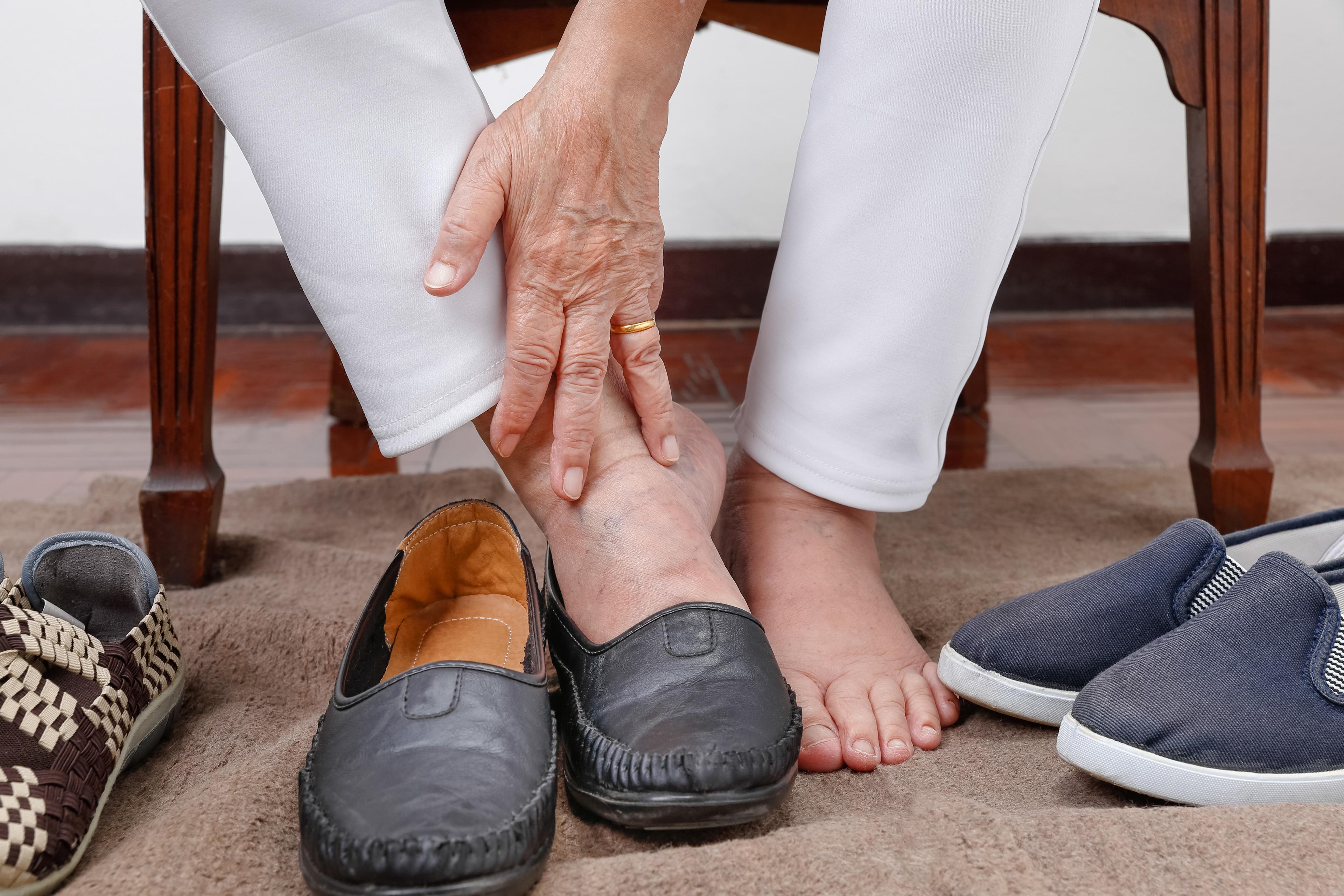How Diabetes Affects Your Feet
Abby Grant
| 3 min read

Managing diabetes requires individuals to make decisions every day to keep their blood sugar stable – including eating healthy foods, checking their levels, not smoking, incorporating movement and taking any medications prescribed by their doctor. Many people may overlook caring for their feet.
Diabetes is a chronic disease in which a person’s blood sugar levels are too high. Type 1 diabetes occurs when the body doesn’t make insulin, and type 2 diabetes occurs when the body doesn’t make or use insulin well. Diabetes can damage the nerves in the body and can lead to serious foot problems.
Half of all people with diabetes have some form of nerve damage, and up to one in four people with diabetes will develop a diabetic foot ulcer in their lifetime.
People with diabetes should see their doctor regularly to check in on their health and evaluate their treatment plan. One of the most common problems that doctors check for is foot problems.
How does diabetes affect feet?
Diabetes can decrease the amount of blood flow in your feet, which can lead to a multitude of foot problems. Without enough blood flow, infections and sores heal slowly or not at all.
One common foot problem is called diabetic neuropathy, which can cause loss of feeling in your feet, tingling and pain. Early signs of this include a lowered ability to feel pain, heat or cold.
Once people with diabetes lose their sense of feeling in their feet, they may not realize they have foot issues like cuts or sores. Foot cuts and sores may not heal properly and get infected.
Gangrene can develop as a result, meaning the muscle, skin and other tissue begins to die. Some infections can quickly go from bad to worse and can ultimately lead to the amputation of the infected toe, foot or part of the leg.
However, with daily foot care and diabetes management, people with diabetes can keep their feet healthy.
Everyday footcare tips
Inspect feet daily: One of the most important things that people with diabetes can do daily is check their feet for any cuts, sores, calluses or blisters. Checking feet for any problems allows you to catch problems early and get the help you need. It is important to check all areas of your feet, so if you struggle with mobility have a family member or care giver look for you.
Wash and dry thoroughly: Washing your feet daily can prevent foot cracking and keep feet moisturized. However, after washing it is essential to dry feet thoroughly to prevent infection.
Wear shoes that fit well: Wearing socks and a sturdy pair of shoes that fit well can make a big difference in preventing blisters, cuts and potential infections. Consider wearing shoes indoors to prevent injuries as well.
Keep toenails trimmed: Trimming your nails regularly can help prevent them from growing too long and cutting your skin. If cutting your own nails is difficult, ask for help.
Get blood flowing: Find ways to improve the blood flow to your feet. This can be as simple as putting your feet up while sitting, wearing compression socks or wiggling your toes throughout the day. Or, if you have more mobility, find ways to get physically active every day.
Seek medical attention early: The most important tip is to seek medical attention as soon as possible after finding a cut or sore on your feet. Sometimes it is not possible to prevent cuts or sores but catching them early and getting the medical attention necessary can prevent bigger problems down the road.
Managing your diabetes and keeping up with routine visits to your health care provider are some of the best ways to ensure your feet stay healthy. Be sure to talk to your health care provider about the best ways to care for your feet if you have prediabetes or diabetes.
Photo credit: Getty Images





